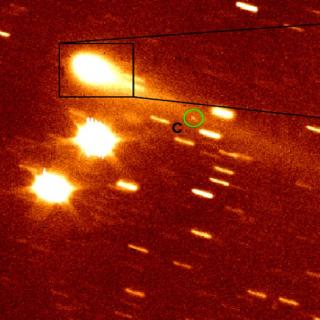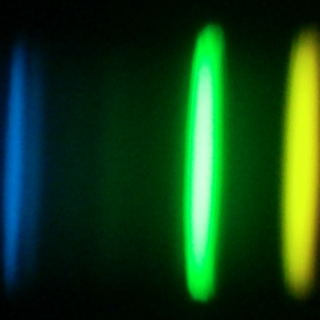Bibcode
de la Fuente Marcos, R.; de la Fuente Marcos, C.; de León, J.; Alarcon, M. R.; Licandro, J.; Serra-Ricart, M.; García-Álvarez, D.; Cabrera-Lavers, A.
Referencia bibliográfica
Astronomy and Astrophysics
Fecha de publicación:
1
2024
Revista
Número de citas
1
Número de citas referidas
0
Descripción
Context. The Arjuna asteroid belt is loosely defined as a diverse group of small asteroids that follow dynamically cold, Earth-like orbits. Most of them are not actively engaged in resonant, co-orbital behavior with Earth. Some of them experience temporary but recurrent horseshoe episodes. Objects in horseshoe paths tend to approach Earth at a low velocity, leading to captures as Earth's temporary satellites or mini-moons. Four such objects have already been identified: 1991 VG, 2006 RH120, 2020 CD3, and 2022 NX1. Here, we focus on 2023 FY3, a recent finding, the trajectory of which might have a co-orbital status and perhaps lead to temporary captures.
Aims: We want to determine the physical properties of 2023 FY3 and explore its dynamical evolution.
Methods: We carried out an observational study of 2023 FY3 using the OSIRIS camera spectrograph at the 10.4 m Gran Telescopio Canarias, to derive its spectral class, and time-series photometry obtained with QHY411M cameras and two units of the Two-meter Twin Telescope to investigate its rotational state. N-body simulations were also performed to examine its possible resonant behavior.
Results: The visible reflectance spectrum of 2023 FY3 is consistent with that of an S-type asteroid; its light curve gives a rotation period of 9.3±0.6 min, with an amplitude of 0.48±0.13 mag. We confirm that 2023 FY3 roams the edge of Earth's co-orbital space.
Conclusions: Arjuna 2023 FY3, an S-type asteroid and fast rotator, currently exhibits horseshoe-like resonant behavior and in the past experienced mini-moon engagements of the temporarily captured flyby type that may repeat in the future. The spectral type result further confirms that mini-moons are a diverse population in terms of surface composition.
Aims: We want to determine the physical properties of 2023 FY3 and explore its dynamical evolution.
Methods: We carried out an observational study of 2023 FY3 using the OSIRIS camera spectrograph at the 10.4 m Gran Telescopio Canarias, to derive its spectral class, and time-series photometry obtained with QHY411M cameras and two units of the Two-meter Twin Telescope to investigate its rotational state. N-body simulations were also performed to examine its possible resonant behavior.
Results: The visible reflectance spectrum of 2023 FY3 is consistent with that of an S-type asteroid; its light curve gives a rotation period of 9.3±0.6 min, with an amplitude of 0.48±0.13 mag. We confirm that 2023 FY3 roams the edge of Earth's co-orbital space.
Conclusions: Arjuna 2023 FY3, an S-type asteroid and fast rotator, currently exhibits horseshoe-like resonant behavior and in the past experienced mini-moon engagements of the temporarily captured flyby type that may repeat in the future. The spectral type result further confirms that mini-moons are a diverse population in terms of surface composition.
Proyectos relacionados

Pequeños Cuerpos del Sistema Solar
Este Proyecto estudia las propiedades físicas y composicionales de los llamados pequeños cuerpos del Sistema Solar, que incluyen asteroides, objetos helados y cometas. Entre los grupos de mayor interés destacan los objetos trans-neptunianos (TNOs), incluyendo los objetos más lejanos detectados hasta la fecha (Extreme-TNOs o ETNOs); los cometas, y
Julia de
León Cruz

Abundancias Químicas en Estrellas
La espectroscopía de estrellas nos permite determinar las propiedades y composiciones químicas de las mismas. A partir de esta información para estrellas de diferente edad en la Vía Láctea es posible reconstruir la evolución química de la Galaxia, así como el origen de los elementos más pesados que el boro, forjados principalmente en los interiores
Carlos
Allende Prieto